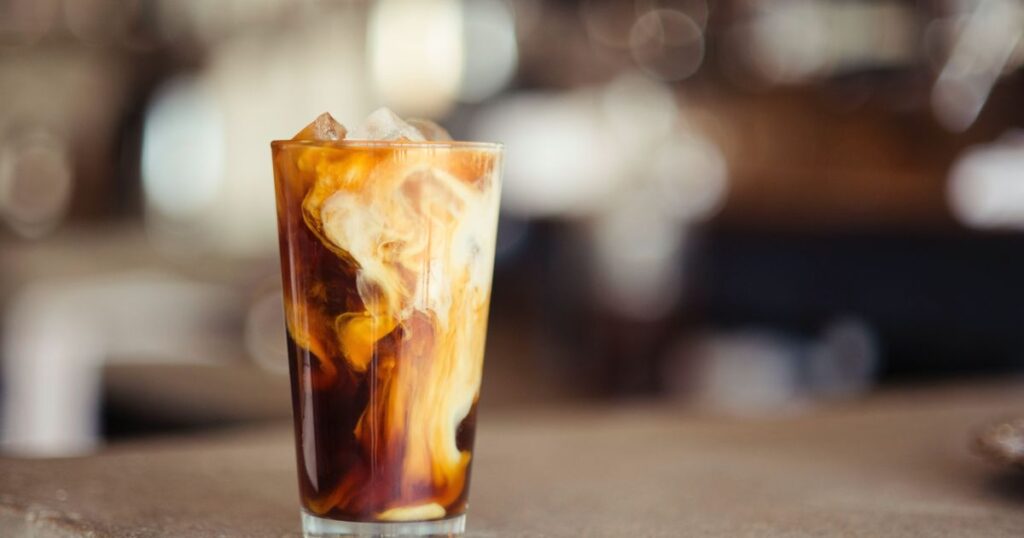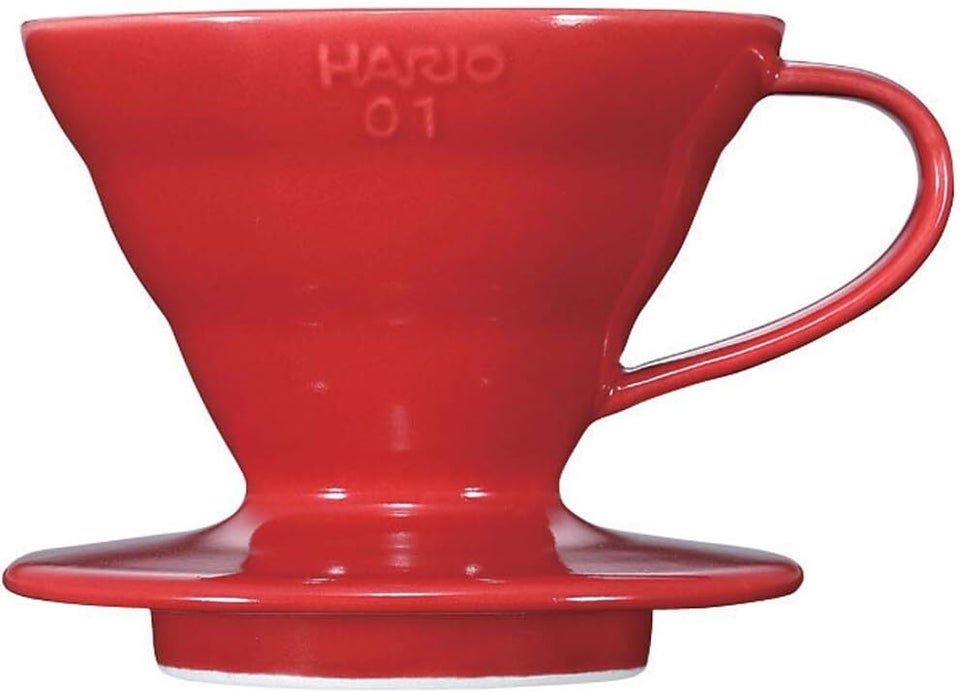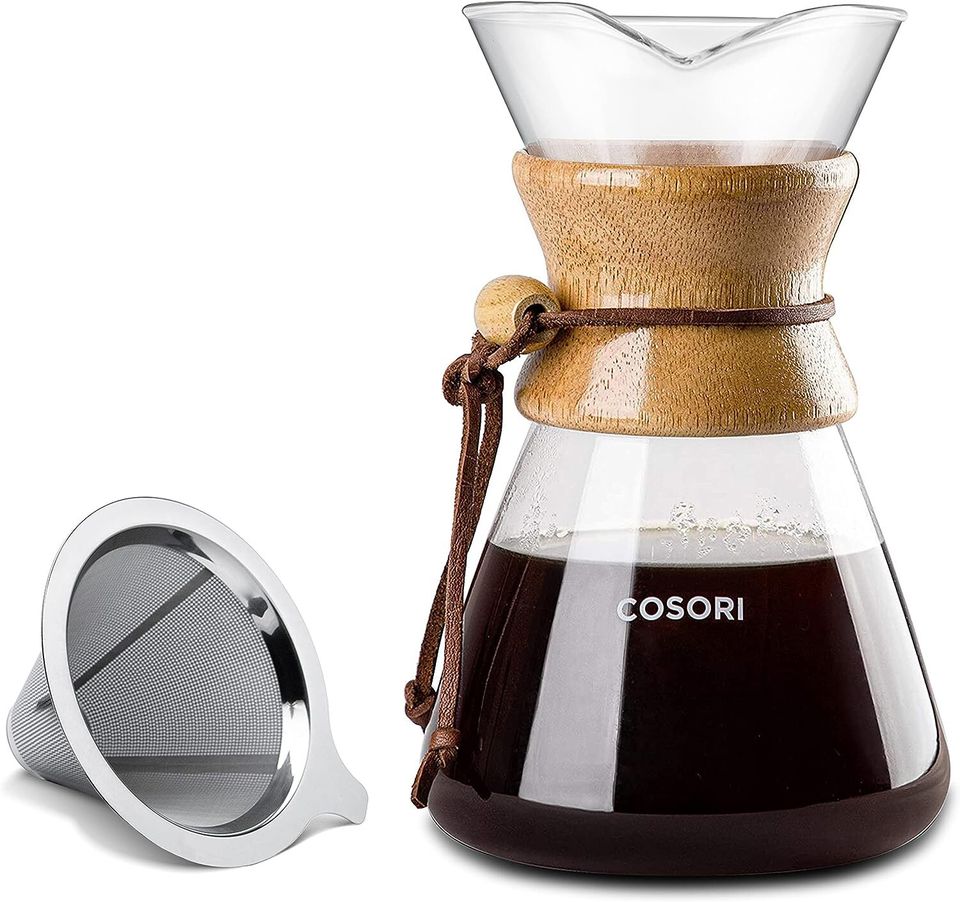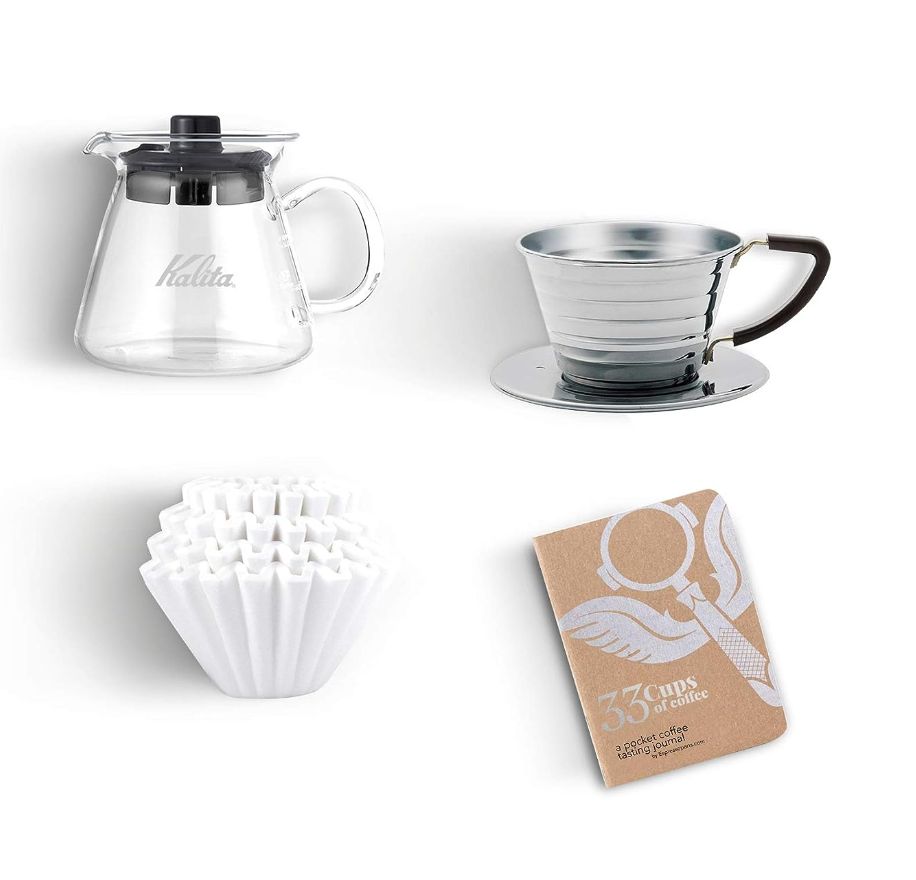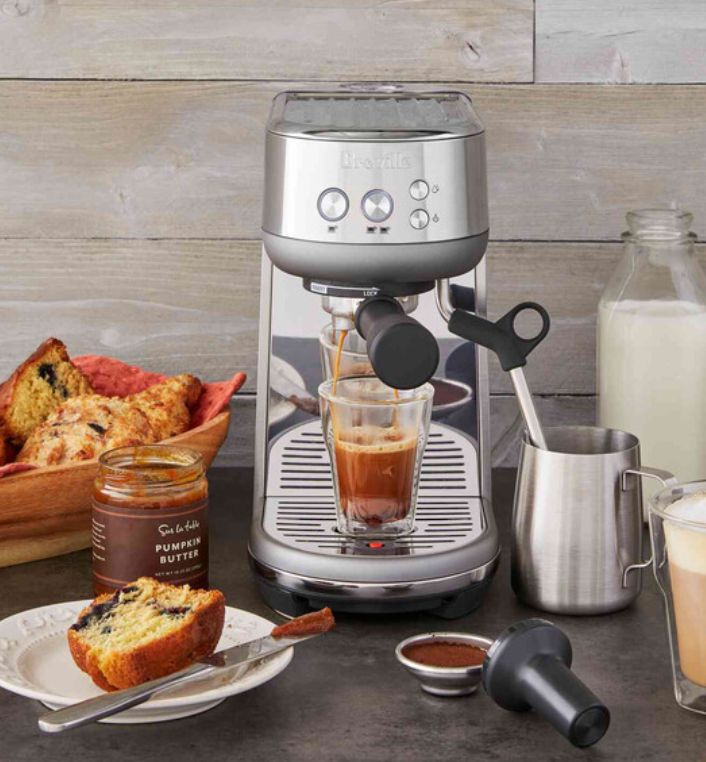Coffee shops have always been excellent venues for talented baristas to display their skills and try innovative flavor combinations. However, regarding coffee and espresso trends, platforms like Instagram and TikTok have the power to launch “viral” drinks at lightning speed. But just because a coffee beverage looks great in photos and videos doesn’t mean that baristas view it as an ideal order.
When we chatted with a large group of expert baristas from all over the country, we found that they like to keep their orders as simple as possible when visiting new cafes.
For instance, Ayat Elhag, coffee director of Yellow and Albi in Washington, D.C., said that a straightforward shot of espresso serves as “a good marker of the more technical side of their operation” and can instill confidence for more elaborate orders in the future. And Jason Hedges, beverage and coffee director of Laurent Tourondel Hospitality, said that his go-to pick is always a drip coffee because “when [drip coffee is] done well (with the correct grind size and weight, water temperature, roast quality, bean selection, etc.) you’ll notice the difference immediately.”
But if you prefer milk-based espresso drinks and coffee pick-me-ups with creative ingredients and flavors, the pros understand how you feel and are happy to accommodate. That said, there are a handful of popular and on-trend beverages that baristas hesitate to recommend.
A ‘caramel macchiato’ is not what Starbucks thinks it is.
The ubiquitous Starbucks chain has done a lot to redefine coffee culture in the United States over the last several decades, and their smash-hit signature beverages introduced many coffee drinkers to terminology they hadn’t encountered before. Case in point: the “caramel macchiato,” which takes its name from an espresso drink native to Italy. There’s one problem — the Starbucks “caramel macchiato” isn’t a macchiato.
Starbucks alum Stephen Power, who currently serves as the lead barista of Meanwhile Brewing Co. in Austin, Texas, remembers making “thousands of” caramel macchiatos during his time as a Starbucks barista, but he cautions any Starbucks devotees against ordering this drink at non-Starbucks venues because, in the Italian coffeemaking tradition, “‘macchiato’ means ‘marked,’ as in marking the top of an espresso shot with a splash of milk and foam. Starbucks has used the word to mean that the espresso marks the top of the milk [instead].”
So, if a caramel macchiato isn’t a “macchiato,” what is it? According to Romina Chavez, manager of Killebrew Coffee in Nashville, Tennessee, it’s “an ‘upside-down’ latte with vanilla syrup at the bottom and caramel drizzle on top.” An ‘upside-down’ latte and a macchiato “are extremely different from each other but are so easily confused for one another,” meaning that when a barista at an independent coffee shop gets a caramel macchiato order, they “usually have to pry information out of the guest to confirm that what they’re getting is exactly what they ordered.”
Don’t order a mocha right before a coffee shop closes.
The combination of coffee and chocolate typically receives so much praise from chefs, bakers and other flavor experts because the flavor notes of each ingredient highlight those of the other. But that principle doesn’t always prove true where the mocha, an espresso drink made with milk and chocolate syrup, is concerned.
“I personally don’t understand the appeal of mocha. Many good coffee shops use a great base product [espresso], only to overpower the beautiful delicate flavors of the coffee with a cheap chocolate syrup, and stirring the chocolate into the espresso completely ruins the crema!” explained Bartho Saayman, director of food and beverage at Carpenter Coffee Bar at the Carpenter Hotel in Austin, Texas.
From a barista’s perspective, mochas require numerous ingredients and preparation processes (like brewing espresso, steaming milk and adding chocolate), which can also be challenging to handle toward the end of a shift. “Let’s say that [a shop is] closing at 5 p.m. and someone comes in at 4:59 p.m. and orders a mocha, then that becomes a slight inconvenience because it requires using the espresso machine and multiple ingredients, followed by more cleanup,” said Adam Keita, co-owner of Daughter in Brooklyn, New York.
‘Holiday’ lattes are heavy on sugar and low on espresso flavor.
Lattes, which include espresso, steamed milk and a top layer of frothed milk, can be found at countless coffee shops, and many baristas agree that they’re among the “safest” orders you can place at an unfamiliar cafe. A latte “is simple and pretty easy to make. It’s also a popular drink, so the odds are that any barista working in a coffee shop likely makes many of these on a daily basis,” said Jessica Rapuano, barista at Willoughby’s Coffee in Connecticut.
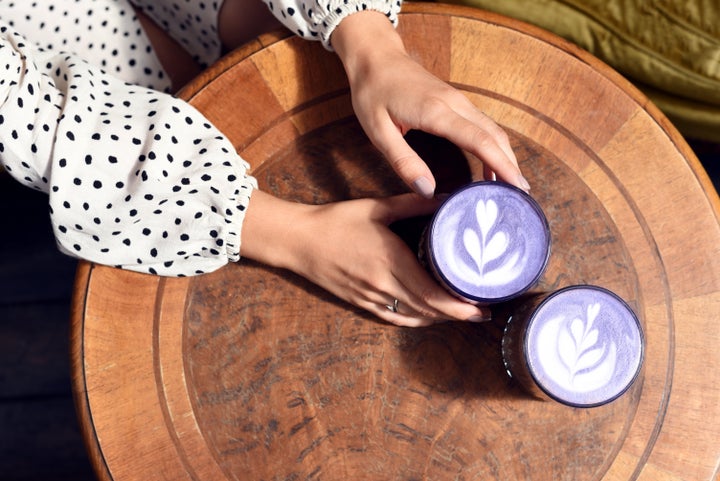
Maryna Terletska via Getty Images
James Benson, co-owner of Progress Coffee in Austin, agrees that lattes are a “reliable” bet at most coffee shops, and that’s exactly why a discerning coffee drinker can “judge a shop by them. You can tell if the espresso is too bitter or smoky most of the time, and you can also tell if they made a mistake steaming the milk.”
But while a standard-issue latte is a good benchmark of a cafe’s overall quality and an easy “old faithful” drink to keep in your back pocket, the rise of flavored and infused lattes isn’t a favorite trend of many baristas. “Fancy lattes will always be flashes in the pan because they are niche and more focused on visual appeal than flavor,” said Reuben Villagomez, owner and head roaster of Paloma Coffee and Bakery in Brooklyn.
Prime examples of flavored espresso drinks that don’t necessarily make the most of their core ingredient are holiday — and season-themed lattes (like Starbucks’ famous, or infamous, Pumpkin Spice Latte and Peppermint Mocha). Chuck Wylie, general manager of Jo’s Red River in Austin, told us that he never orders these drinks because “the recipes are too sweet. I don’t like to ask for ‘less sweet’ or other modifications because the [original] recipe is how the drink is meant to taste. But I want to taste the coffee, not the sugar!”
Lavender lattes run the risk of tasting like perfume.
It’s easy to understand why lavender lattes gained popularity during the pandemic; people had a vested interest in wellness, and aromatic, herbaceous lavender gave off those desirable “good for you” vibes. But although lavender-infused lattes are still very present at U.S. coffee shops, Camille Pardoe, a barista at Crew Coffee and Cremerie at Lido House in Newport Beach, California, cautions against them because “the floral flavor can be very strong and not as pleasant as it reads on paper.”
Because lavender has a powerful and distinct flavor, it can easily take over the drink and obscure the espresso. Also, most lavender lattes involve using lavender syrup, which introduces “consistency issues, especially if the coffee shop/restaurant are making their syrups in-house,” said Lauren Beene, general manager of Walton’s Fancy and Staple in Austin. Beene has noticed problems with lavender lattes in the past, including “too much lavender flower added in the simple syrup, or [the flowers] could be steeped too long in the process of making the syrup.” Beene also points out that different cafes will likely source their lavender from different places, so you could end up with significant variations from one coffee shop to the next.
Olive oil lattes can have unexpected consequences for your digestive system.
Lattes, with an added dose of olive oil, made a strong showing in early 2023 due to the fact that prestige olive oil was already trending and to Starbucks’ January launch of their proprietary olive oil coffee. The richness and nuanced taste dimensions of olive oil seemed like a natural fit for coffee, but, as Kirstine Gjerding Grøn, head of people and barista education developer of Ole and Steen in New York City, warns, those potent olive oil notes “will dominate the whole drink.”
Unfortunately, the potential downsides to olive oil lattes don’t stop with their unbalanced flavors. Because olive oil has laxative properties and caffeine can affect the GI tract, the mixture of the two “might also kickstart your whole system in a way where you will need to stay close to a bathroom,” Grøn said.
‘Shaken’ espresso gives you a watered-down beverage.
Another barista-backed social media star (now on the Starbucks menu), “shaken” espresso refers to espresso that’s shaken with ice and topped with milk. The idea is that the shaking motion and the ice will create a frostier and frothier spin on a latte.
“Shaking” a cocktail (or, apparently, an espresso drink) will effectively drop its temperature and give it an airier texture. However, pouring hot shots of espresso over ice immediately starts the melting process, and since shaking will break the ice down farther, “a shaken espresso would dilute the coffee, resulting in a pretty wimpy flavor,” cautioned Jordan Deleon, barista at Mañana Coffee in Austin.
Don’t order Vietnamese iced coffee unless the beans are grown in Vietnam.
American java fans love iced coffee (year-round, in some cases), so when “Vietnamese iced coffee” — made by brewing coffee into a cup with sweetened condensed milk and chilling it with ice — started showing up on cafe menus, it wasn’t surprising. But it’s important to know that “unless the business is using coffee beans from Vietnam, I would not order this,” insisted Sahra Nguyen, founder of Nguyen Coffee Supply.
Vietnamese coffee growers tend to produce robusta beans, which have a more robust flavor than arabica and can hold their bold and structured taste even when paired with condensed milk. Also, Vietnamese iced coffee is traditionally brewed with a phin filter, a pour-over brewing system native to Vietnam that produces an assertive and multilayered flavor profile.
Nguyen emphasizes that a coffee drink that borrows Vietnam’s name should maintain the integrity of Vietnam’s impressive coffee history by using natively-grown beans. Using beans grown elsewhere and marketing the drink as “Vietnamese,” cafe owners are “appropriating cultural cachet for profit. It’s important for companies to focus on authenticity and the unique qualities of different coffee beans rather than simply capitalizing on cultural trends without regard for the communities that created the culture.”
Support Free Journalism
Already contributed? Log in to hide these messages.
Want to brew your own stellar coffee at home? Below are some single-cup brewers that baristas love.
HuffPost and its publishing partners may receive a commission from some purchases made via links on this page. Every item is independently curated by the HuffPost Shopping team. Prices and availability are subject to change.
Hario’s V60 ceramic coffee pour-over cone
Kawahara says this method is perfect for making 10-12 ounces of coffee, noting, “This technique really brings out the flavors of the coffee, making them more noticeable and enjoyable.” But she recommends using Hario’s specific pour-over paper filters, “[to] remove any extra bits like oils and sediments from the coffee, resulting in a smoother and less bitter taste, leaving your mouth feeling fresh.”
Konwinski also recommends using Hario’s white paper filters and encourages using a kitchen scale to ensure precision for one cup. “Using an appropriately accurate digital scale, not just for the beans but also the water as I brewed, has been one of the largest improvements to my coffee craft,” Konwinski said.
Han uses this ceramic dripper every morning, saying, “The V60 produces stellar coffee, especially if you enjoy bright, fruit-forward coffees since this brewing method tends to highlight the top notes in coffee.” She does note you may not get it right your first few times. “Proper V60 brewing technique does take a bit of practice to get right, and the brewing process itself requires full attention for 2-3 minutes — which might not be possible some mornings,” she said.
A Clever coffee dripper with 100 filters
If your heart is calling you to try a single cup pour-over, but you want something a little less finicky, Han recommends the Clever dripper. “It’s a nearly foolproof way of making a fantastic cup of coffee without requiring a specific pouring technique or even the use of a gooseneck kettle,” she said. “The Clever’s design is a mix of immersion brewing and percolation brewing. The Clever dripper is essentially a French press that gets filtered, and it’s just as easy to use! Definitely a favorite method.”
AeroPress portable coffee maker
“It’s simultaneously the most versatile brewing method out there while being very humble in appearance, design and pricing,” said Andrea Grove, creator and roaster at Elementary Coffee Co. in Harrisburg, Pennsylvania. “I use mine with a hand grinder that’s designed to fit snuggly inside the pieces and make for easy travel. So I take it everywhere with me for a good cup of coffee on the road, in the woods, and at home!”
Peter Leonard, owner of Little Amps Coffee Roasters in Harrisburg, Pennsylvania, agreed, noting the ease and price point of this compact device. “As long as you can get ground coffee, which most specialty shops can do for you, and have a hot water source (even a microwave) you can use the provided scoop and get a great cup with our measuring anything! And they’re super affordable!”
Cosette Manson, a coffee content creator who consistently goes viral recreating Starbucks drinks at home, also loves the AeroPress for its versatility and affordability. “You can make espresso, hot coffee and cold brew! I highly recommend it to both beginners and coffee experts. I love using my AeroPress to recreate Starbucks drinks at home, too!” Manson said.
Cosori pour-over coffee maker with stainless steel filter
“If I have the time, I prefer to use a pour-over to create my coffee at home,” Spring said. “Currently, I am using the COSORI pour-over coffee maker I purchased from Amazon before we opened Tall Rabbit. I simply boil water in my kettle, put in the reusable filter, and start the pour-over process. I enjoy the process almost as much as I enjoy the quality of coffee.”
A Kalita Wave dripper
Breville Bambino espresso machine
While Breville espresso machines run the gambit in size, price and complexity, we like the Bambino model. It’s a smaller, compact machine made for making one to two shots, but also has a frother. It won’t take up your whole counter (and it’s a lot cheaper than the bigger models).
Support Free Journalism
Already contributed? Log in to hide these messages.

